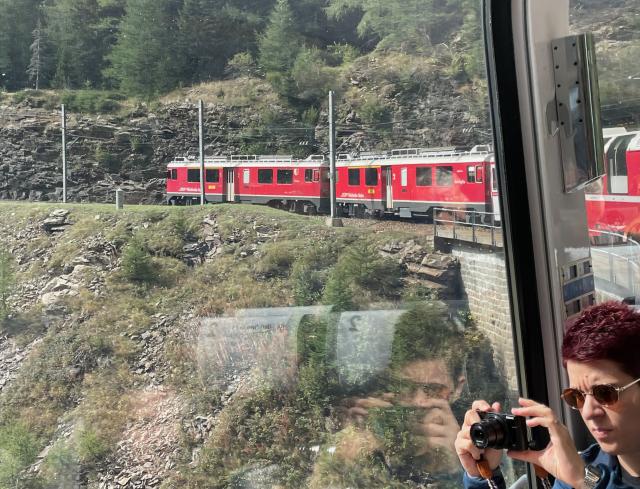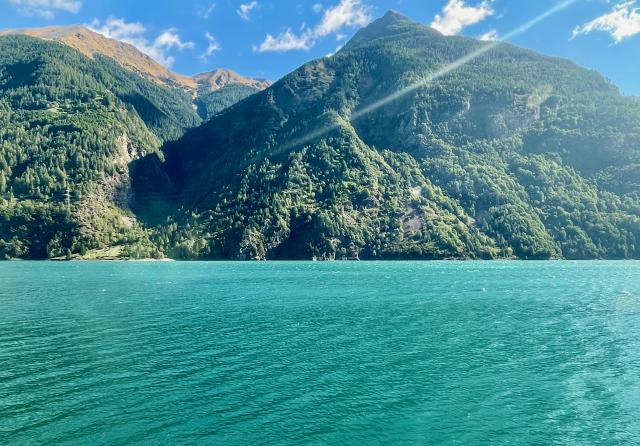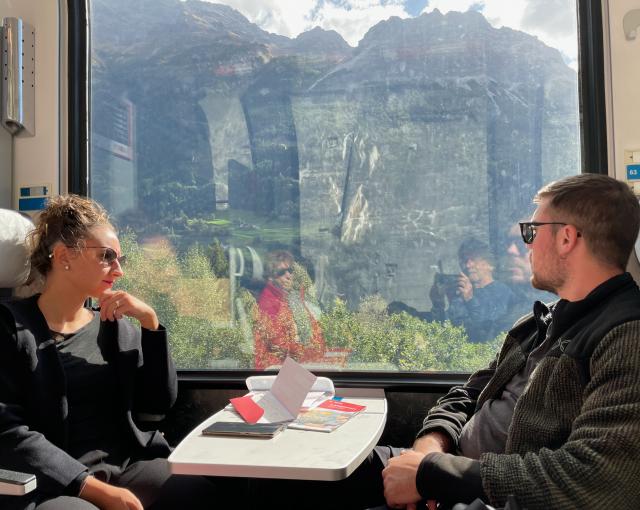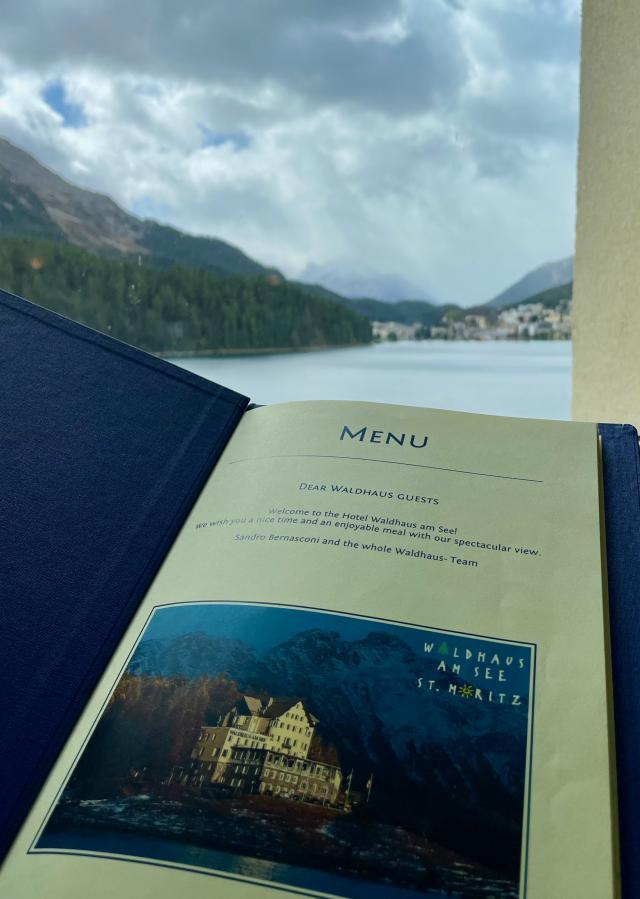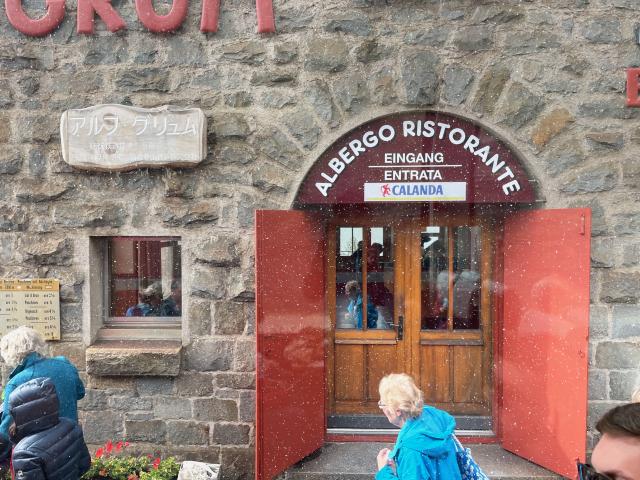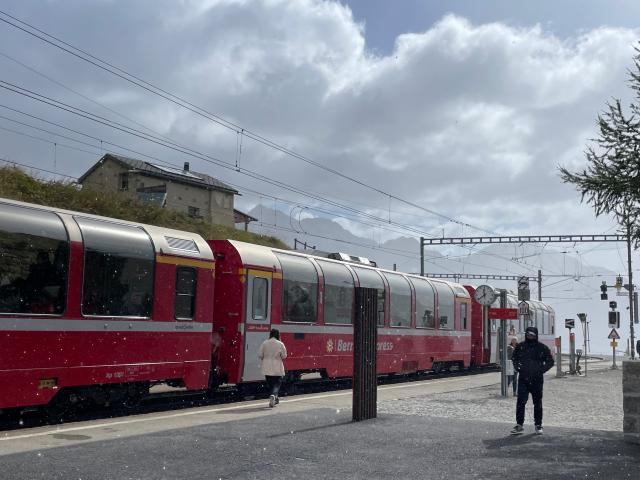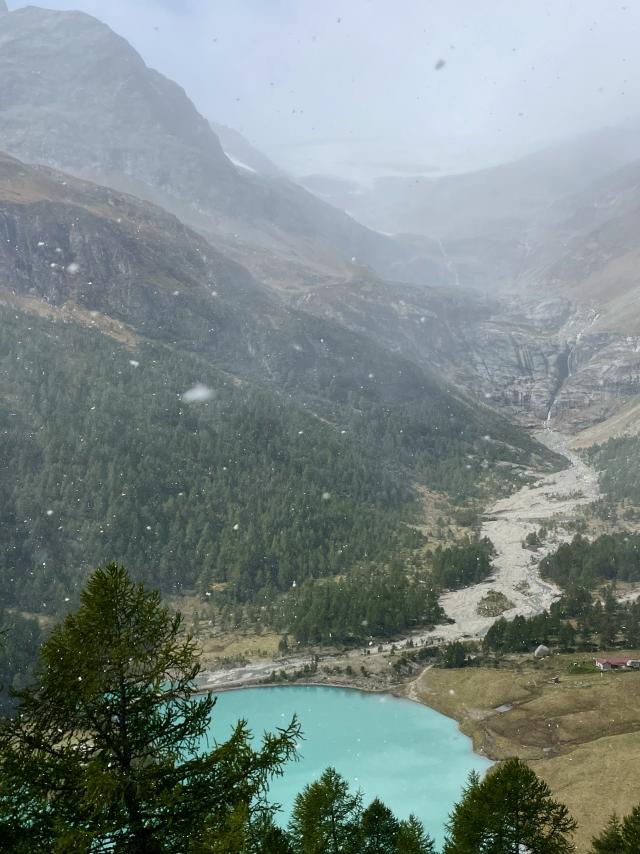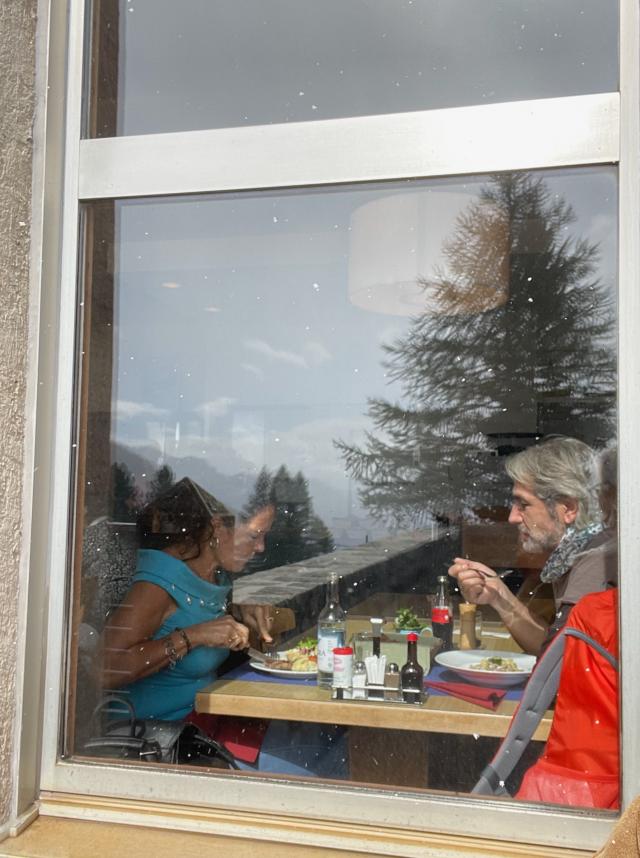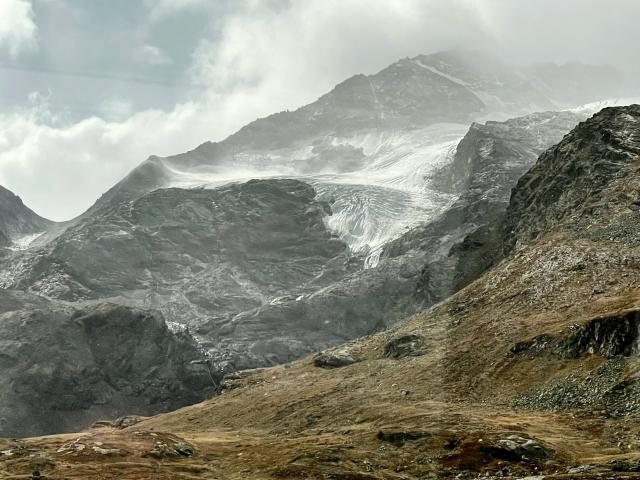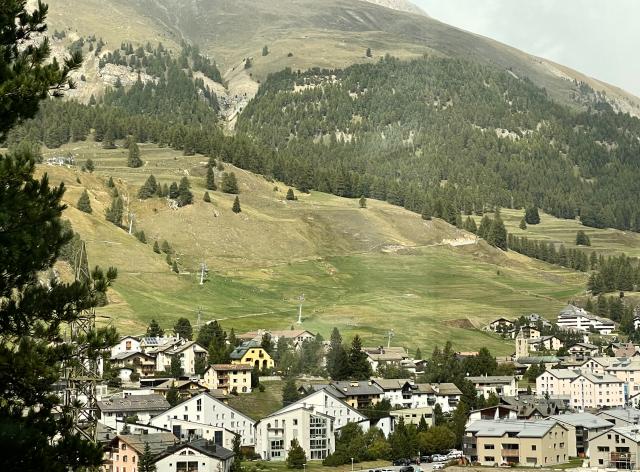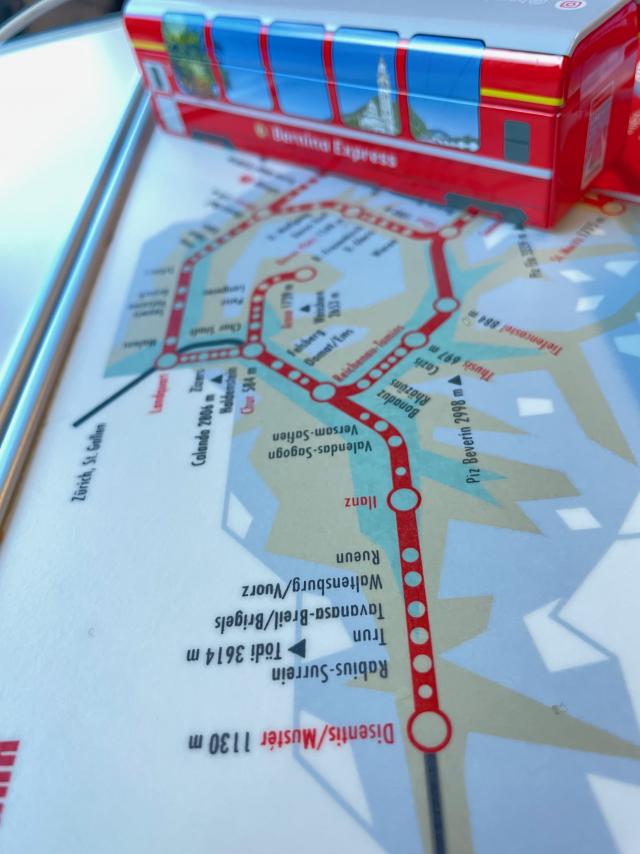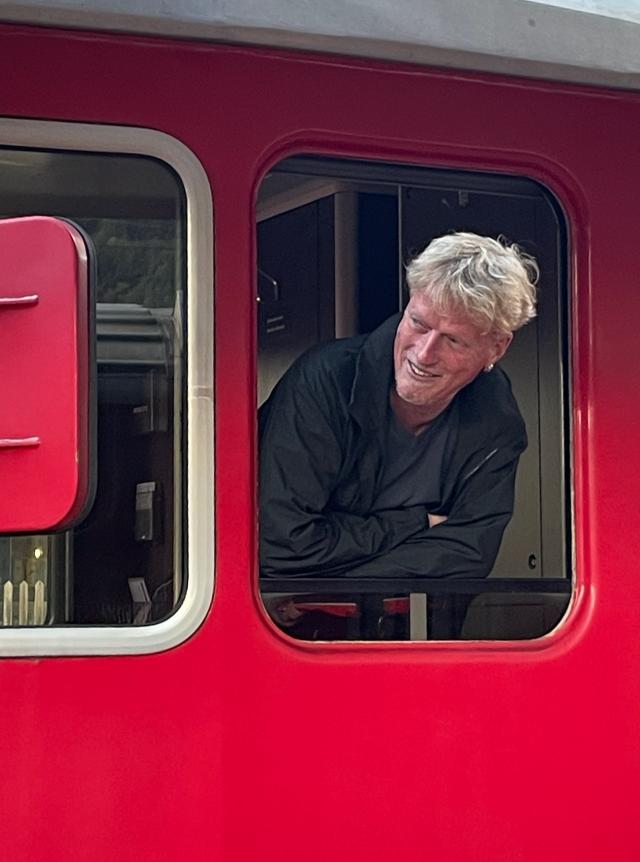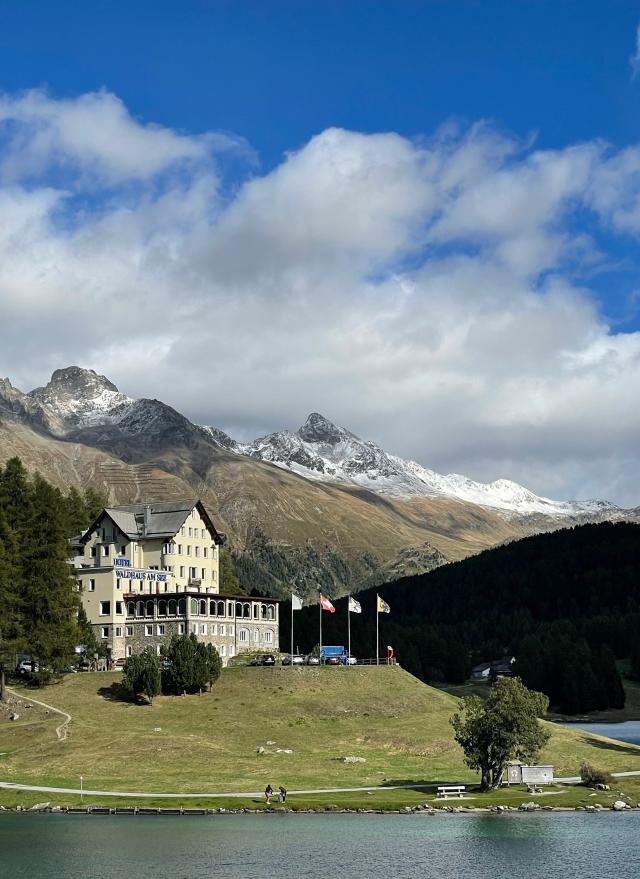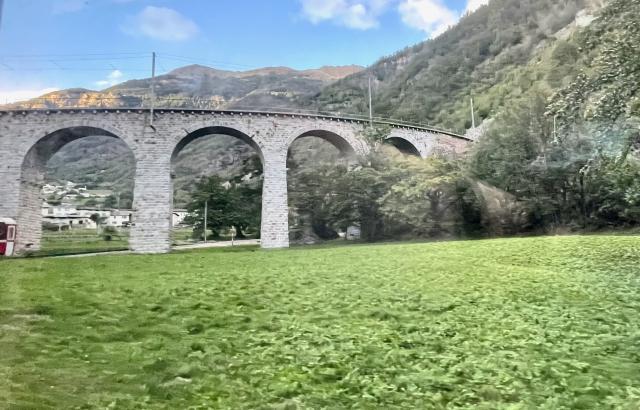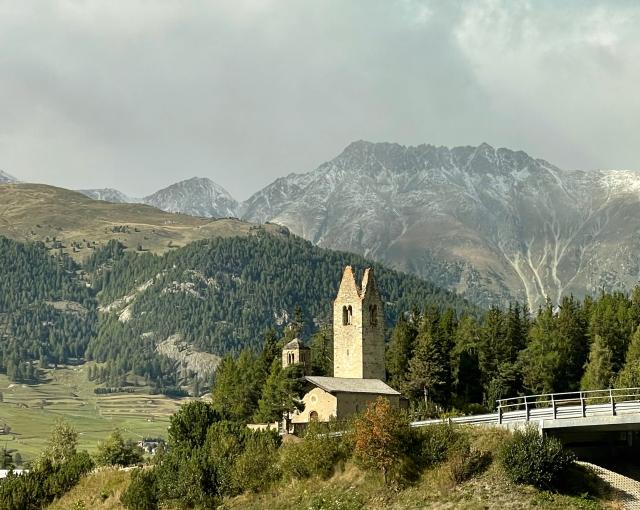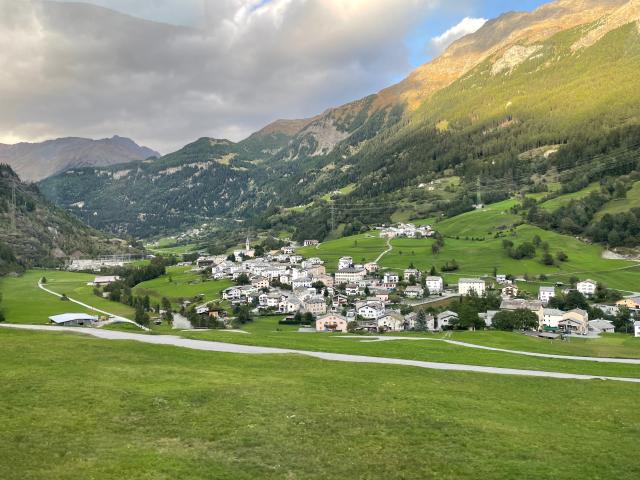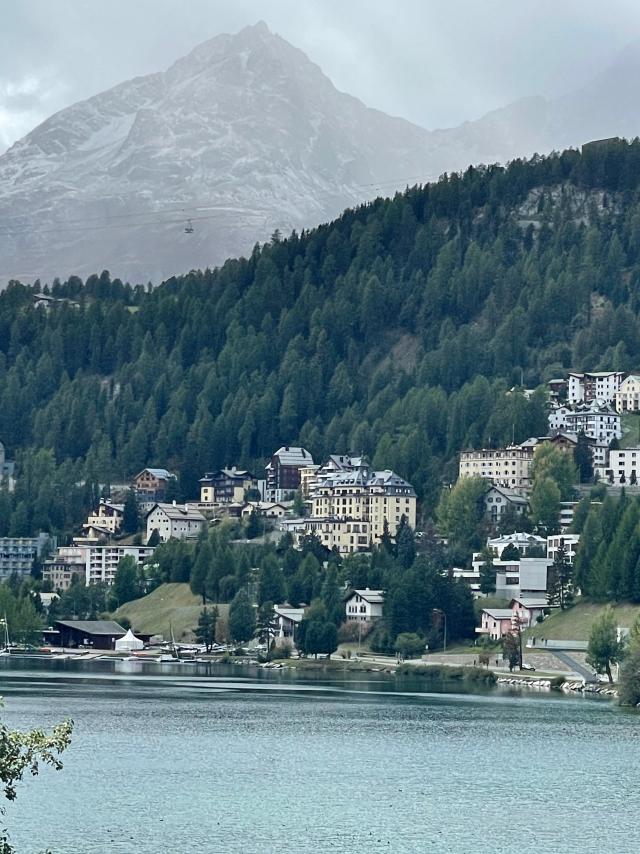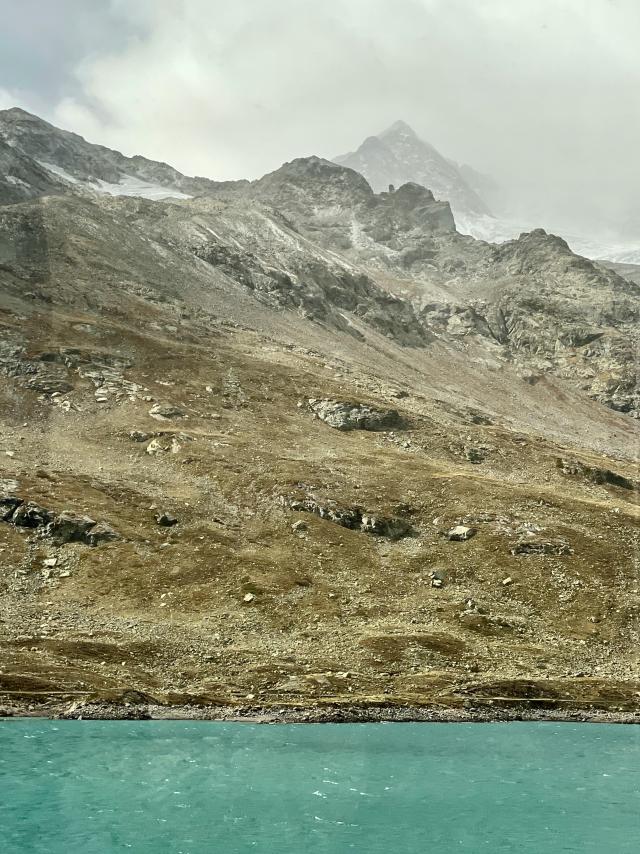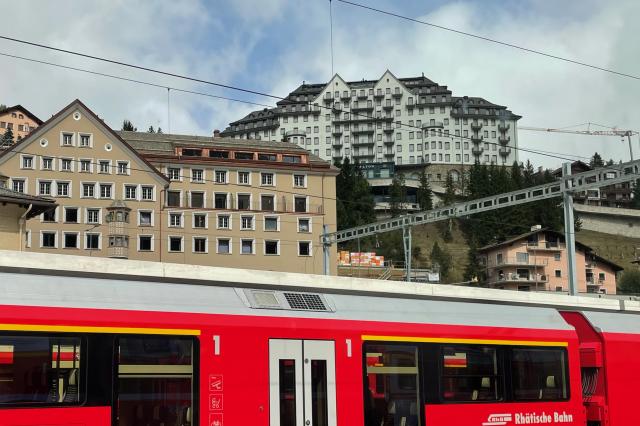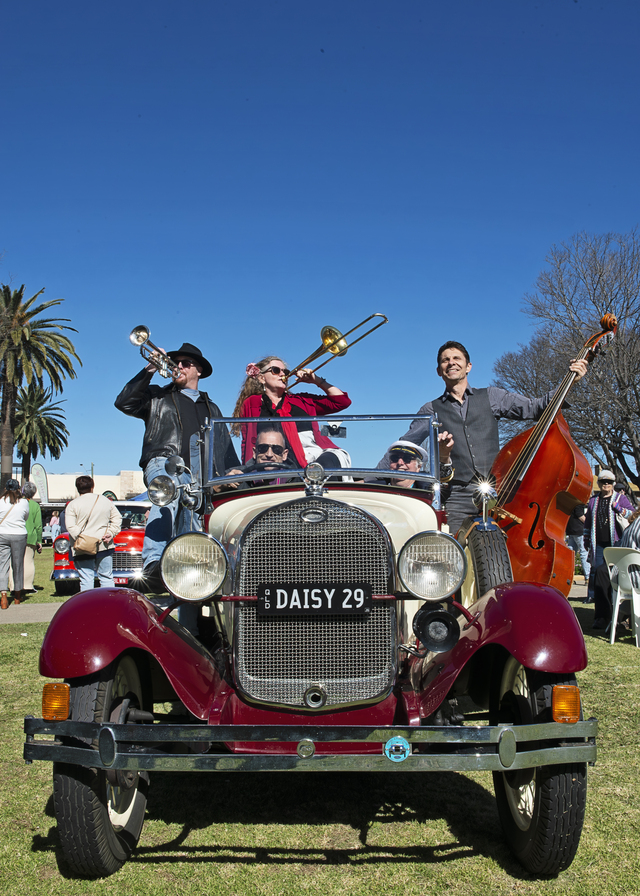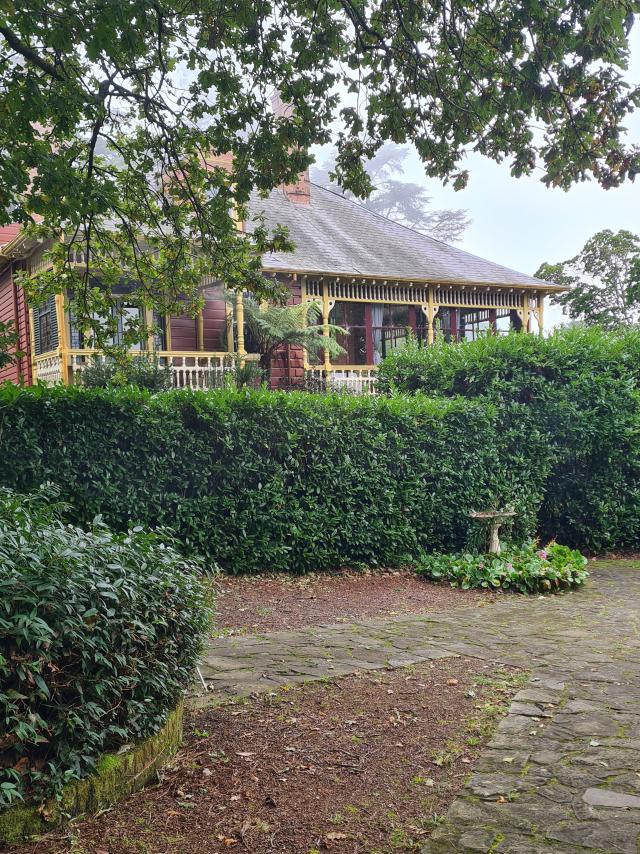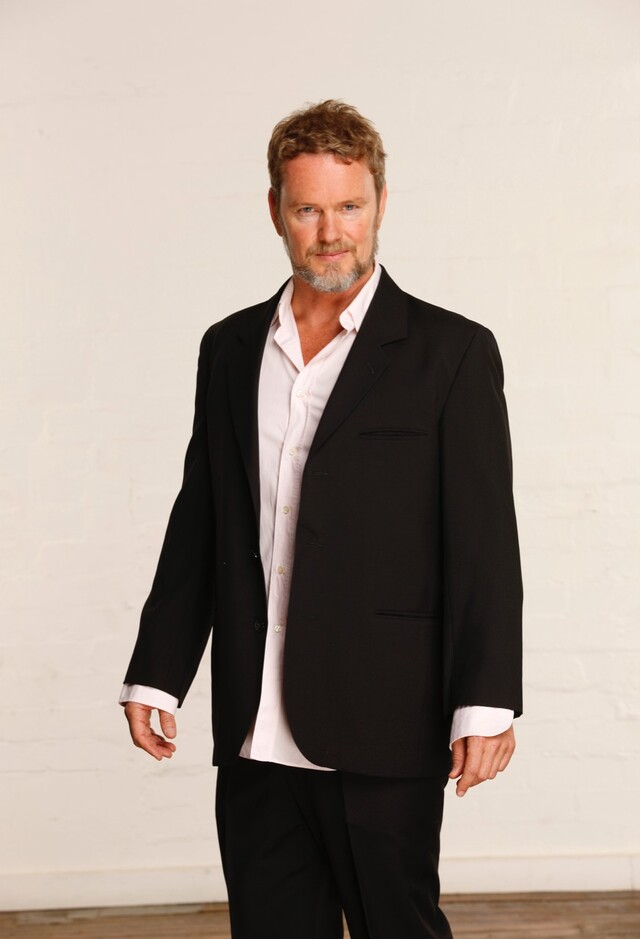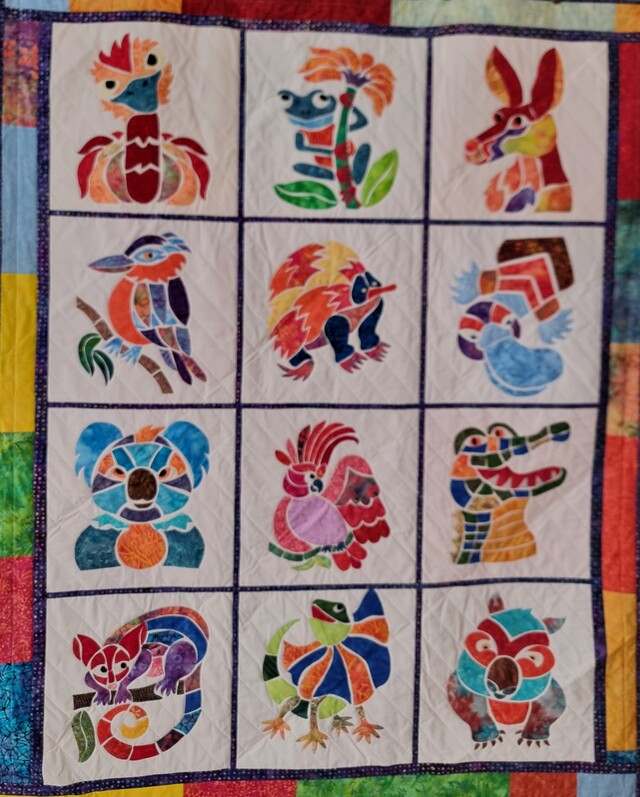It was one of the most intriguing railway journeys. One that exceeded any expectations we may have held.
As part of an adventure in Italy, my travelling companion had put the red train, or the Bernina Express, on her wishlist.
As a little girl she read Narnia by C.S. Lewis. Not just once – eight times.
There was something very magical about the scenery Lewis described in his book – images of snow-covered pine trees, magical dark forests, and mythical wonderful creatures that lived, talked and walked around this fairytale land.
For a long time she devoured those images of Canada in travel magazines, as enjoyed from a beautiful glass-topped train.
This image – and longing – had been filed away in the “one day” part of her brain, where she honestly thought it would always remain a dream.
For my part, I had long been fascinated by the images of the trains winding through the Canadian Rockies, but had not heard of the Bernina Express.
Yet there we were, walking from our Airbnb in the northern Italian city of Tirano to the railway station early in the morning.
It was September so the day was fine and sunny. We had pre-booked the tickets for a day-return to the Swiss resort town of St Moritz.
Yes, the one chosen by royalty, movie stars and dignitaries – especially in winter. Horse-drawn sleigh rides through the snow, warm spiced wine … that sort of thing.
Yet here we were grabbing a coffee near the station then making our way onto the platform and looking for the designated carriage.
This was exciting. Like in the movies where war-time lovers say goodbye amid desperate scenes.
Well, not quite. The UNESCO World heritage-listed train is bright red with clerestory windows to enable full view of what is anticipated to be spectacular mountain scenery.
As part of first class, seating can be opposite or side by side, and is such that you get to look out of one side going up to St Moritz and the other side on the way back down to Tirano.
And what a gorgeous town Tirano is. In the head waters of Lake Como and at the foot of the European Alps, it has many links with Australia from the 1950s and ’60s as villagers migrated in search of work on major projects such as the Snowy Mountains Scheme.
Not long after leaving Tirano railway station you cross the border into Switzerland and the train climbs past lakes, picture-book villages and towns in rural landscapes.
There is an impressive part of the railway line at Brusio designed so the train moves from higher ground to lower or vice versa via a 360-degree sloping viaduct – like a corkscrew.
It must be Swiss technology and engineering, the way the train makes its way up the mountain pass.
Then you are truly in the alps where glaciers, snow-capped mountain peaks and picture-perfect serene lakes of blue waters meeting the majestic rolling forests of dark-green pines..
It’s magnificent and at the same time daunting. Ski lifts spread out from the villages. Barriers are in place to stop snow drifts in winter, horses and cattle graze on the tundra-style grasses of the higher altitudes.
From Poschiavo, the train climbs up to Alp Grüm – a hotel and restaurant built in 1910 and inaugurated in 1926.
Here, there is a brief stop in the journey for views of the Palu lake and glacier. Although it’s mid-autumn, there is what at first seemed like sleet falling down … but it was just drifting, floating up with the breeze and cascading down the glass walls of the train – and the air was so cold. I declared it to be snow.
The White Lake is formed from the glaciers and the water often has a milky appearance thanks to suspended minerals. The water flows to the Mediterranean, whereas the Black Lake flows to the Black Sea.
When the train reaches the Bernina Pass, you’re at 2253 metres on the highest rail crossing in Europe. This is one of the world’s steepest narrow-gauge railways yet operates year-round.
We pass the Morteratsch Glacier, Pontresina and Celerina. There is simply more beauty than the eyes can take in.
The train pulls into St Moritz and it’s hard to believe that we are actually part of this exotic landscape.
Instead of jostling for a coffee or hot chocolate at the station we walk up a gentle hill and across to an exclusive hotel overlooking St Moritz lake with dramatic snow-capped peaks in the background.
There’s a wedding reception in the main room but our eyes are drawn to a table for two that looks available.
We stare at each other and when the maitre d’ Claudio comes up and says hello, our faces must have given us away.
I’ll let Melissa finish the story: In a moment of sensibility we are invited to see the menus, not thinking for one minute they would fit within our budget.
Claudio knew exactly what we wanted and took us to the most exquisite picturesque setting for lunch in the corner.
He selected a beautiful Tuscan trebiano white wine to accompany our bouillabaisse and lobster soups that come with crusty European breads.
Then there was the experience of watching as he cascaded the vanilla cream sauce over the apple strudel. It came served with blueberries, strawberries and elderberries.
While Switzerland is not renown for its coffee, we ordered two cups of long espresso with warm milk on the side.
It was exceptional to taste and served beautifully in an elegant china cup – compliments of the establishment, which in itself was a true representation of the experience.
There we were, two people wondering how they found themselves in the fantasy scenery of their childhoods, and in this chapter of their journey.
The return train trip was almost nostalgic as the afternoon sunshine cast a golden glow on the rock faces of the mountains.
We descend down through the pine forests and the lush green pastures.
Until this moment – reflecting on the “why” and “how” we ended up on that Bernina Express – we had suppressed all those childhood memories, dreams, and longing for this serene landscape.
Being there – immersed in the visual beauty of pine forests, cliffs and glaciers – created a sense of utter wonderment, fulfilment and magic. This journey was a reminder that dreams and childhood images really can come true at any every moment in life – sometimes when you least expect it.
CHECKLIST
The train operates year-round, with daily departures from both Chur in Switzerland and Tirano in Italy, and additional departures during the peak summer season.
Return first class fare Tirano to St Moritz about $A196.
For return journey allow 10 hours.
There are options to go from Milan to St Moritz on a day trip:
Trenord regional trains run from Milan Centrale to Tirano, then change to Rhätische Bahn for the Bernina Express – the Swiss railway network.
The railway stations are next to each other at Piazzale Stazione (Station Square).
Otherwise a coach departs from Milano Centrale or arranged points, and drives along Lake Como to Tirano for second class travel by Bernina Express to St Moritz.
It is a coach journey return to Milano and the cost is about $235 for a 12-hour excursion.

